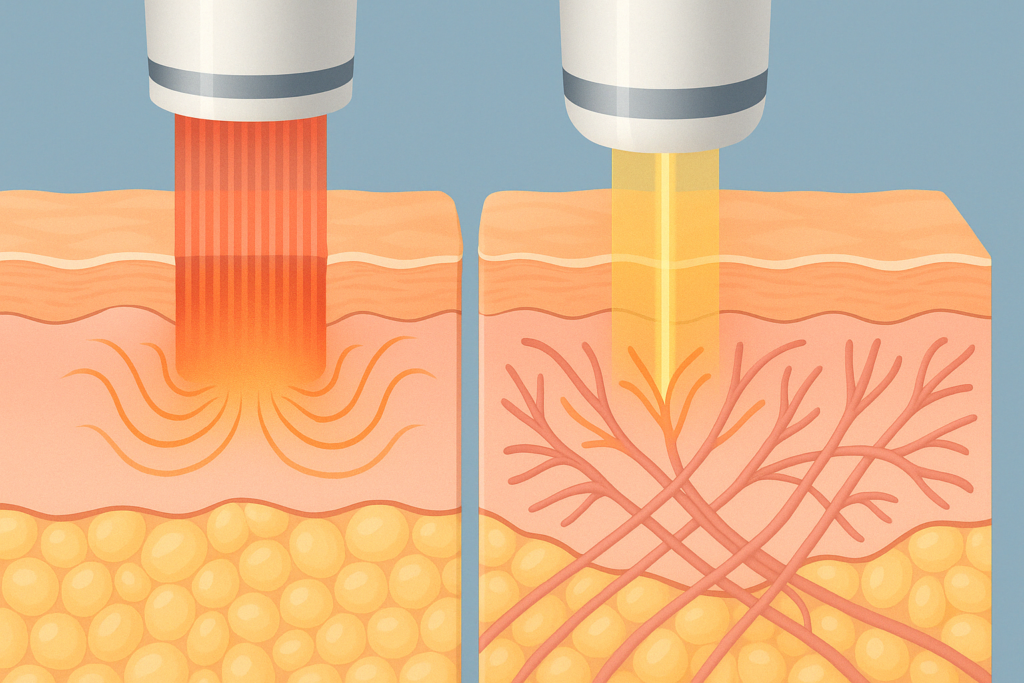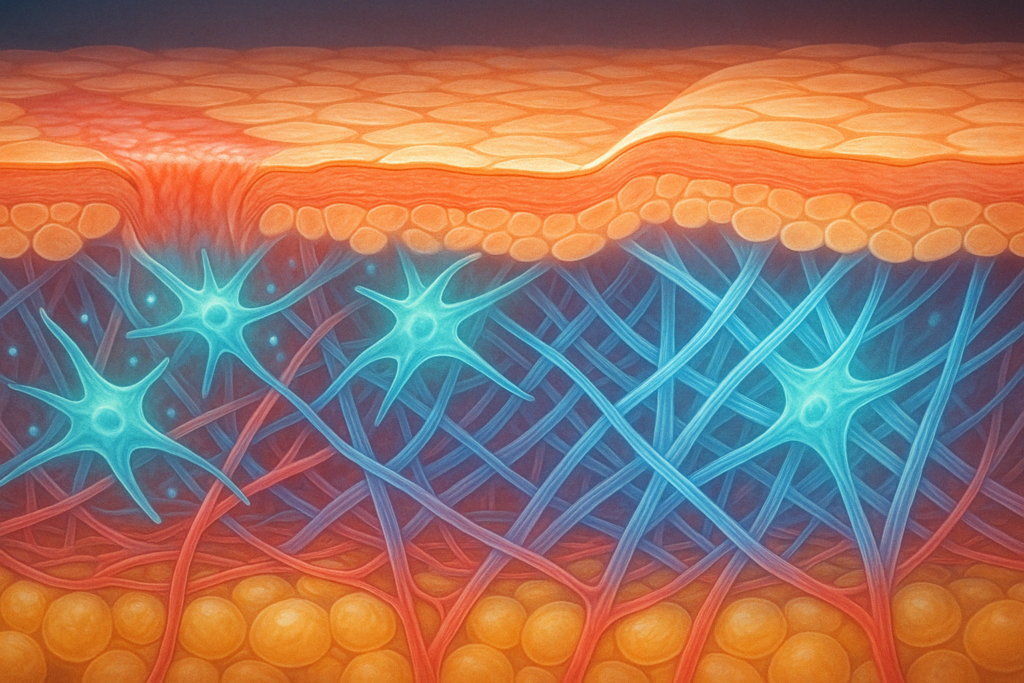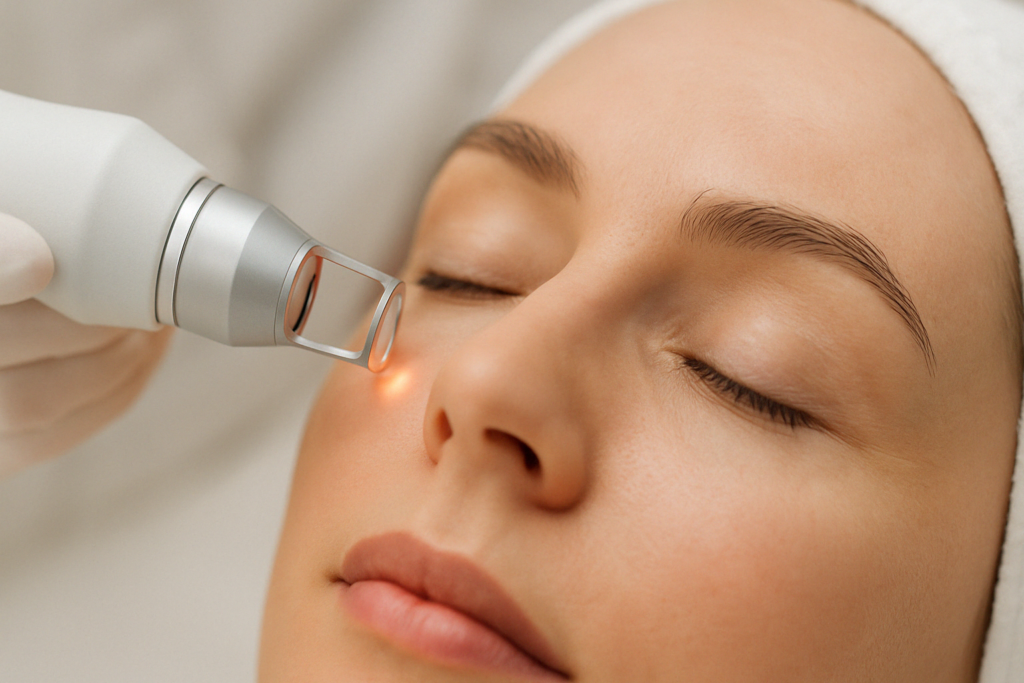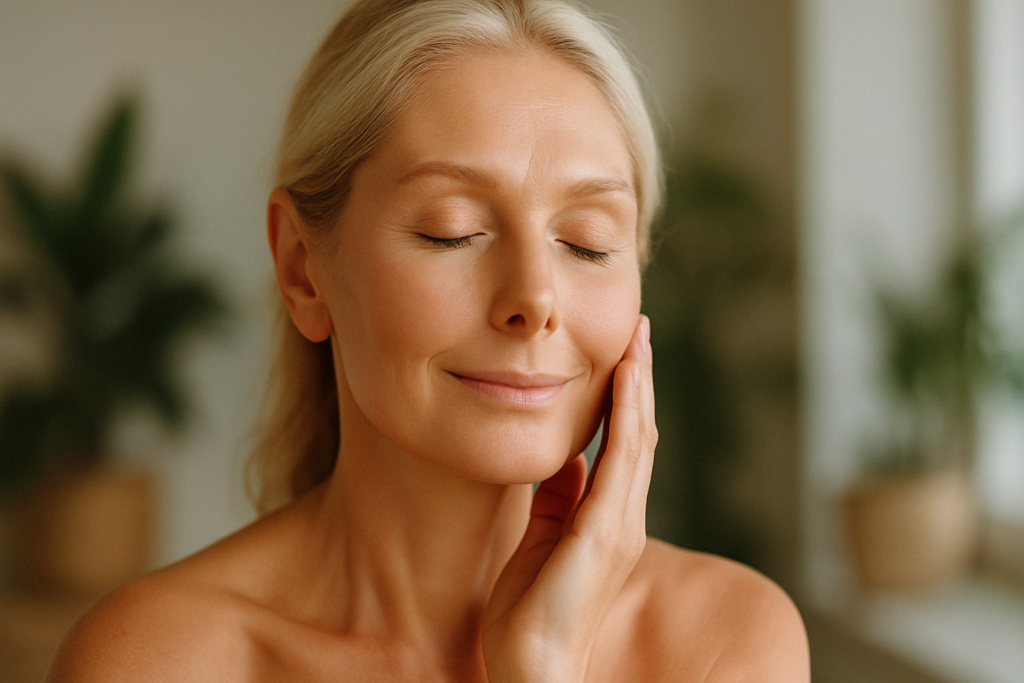In recent years, the demand for non-invasive aesthetic treatments has surged, and facial laser treatment has emerged as a frontrunner in skin rejuvenation procedures. As individuals increasingly seek solutions that deliver results without the extended downtime or risks of surgery, laser therapy for skin has garnered widespread attention in both dermatological clinics and wellness communities. More than a fleeting trend, the rise of laser face treatment reflects a broader shift toward evidence-based approaches to maintaining youthful, healthy skin. At the intersection of science and self-care, facial laser technology offers a promising avenue for those confronting signs of aging, sun damage, and skin laxity.
For those navigating their options, understanding the science, safety, and spectrum of available procedures is key. From facial laser tightening to under eye laser resurfacing, each modality serves a unique purpose and skin concern. While terms like fractional laser or chin laser treatment may initially seem overwhelming, this article will demystify the process and provide an in-depth look at how these innovations work, what they do to your face, and why they continue to grow in popularity. With guidance grounded in dermatological expertise and a focus on natural keyword integration, this discussion aims to empower readers with the knowledge to make informed decisions about the best laser treatment for face rejuvenation.
You may also like: How to Tighten Loose Skin After Weight Loss: Science-Backed Strategies for a Firmer, Healthier You

Understanding How Laser Therapy for Skin Works
To fully appreciate the benefits of laser facial treatment, one must first understand the underlying technology. At its core, laser therapy for skin involves the application of focused light energy to targeted areas, stimulating the skin’s natural healing mechanisms. Depending on the type of laser used, this energy may remove damaged skin layers, promote collagen production, or tighten sagging tissue. This mechanism allows clinicians to address a wide range of aesthetic concerns, from fine lines and deep wrinkles to uneven texture and pigmentation.
There are two primary categories of laser treatments: ablative and non-ablative. Ablative lasers, such as CO2 and Erbium lasers, remove the outer layers of the skin, triggering a wound-healing response that results in smoother, tighter skin. Non-ablative lasers, by contrast, work beneath the surface, delivering heat to deeper tissues to stimulate collagen without damaging the skin’s outer layer. While non-ablative lasers typically require multiple sessions to achieve optimal results, they also involve less recovery time and reduced risk.
One of the most advanced techniques within this field is fractional laser treatment. Unlike traditional lasers that treat the entire skin surface, fractional lasers target microscopic columns of skin, leaving surrounding tissue intact. This precision reduces healing time while still delivering dramatic improvements in tone, texture, and elasticity. It’s this ability to balance efficacy and recovery that has made fractional laser a preferred option for many patients and providers alike.
For individuals seeking facial laser treatment benefits without extensive downtime, the choice between ablative, non-ablative, and fractional methods hinges on their skin type, goals, and tolerance for post-procedural healing. Understanding what each technology does to your face helps demystify the process and allows for more tailored, effective care.

Laser Treatment and Collagen Stimulation: The Science of Skin Renewal
Collagen, the protein responsible for skin firmness and elasticity, naturally declines with age. This decrease contributes to sagging, fine lines, and a loss of structural integrity. Laser treatment for collagen stimulation is one of the most compelling reasons people turn to laser-based therapies. By delivering controlled thermal injury to the dermis, lasers activate fibroblasts—the cells that produce collagen and elastin.
This regenerative process is especially evident in treatments that utilize fractional laser technology. These lasers create thousands of microscopic zones of controlled injury, prompting the body to replace damaged tissue with new, healthier collagen-rich skin. In the months following treatment, patients often notice gradual but significant improvements in skin density and resilience. It is not simply about erasing surface flaws; laser therapy works on a deeper biological level to restore the architecture of youthful skin.
The best laser treatment for skin tightening often targets these collagen-producing layers with precision. While results are not instantaneous, they are progressive and cumulative. The skin continues to remodel itself over time, leading to enhancements that can last for years. For individuals concerned with long-term aging and structural decline, laser to stimulate collagen offers a medically sound, non-surgical pathway to firmer, more vibrant skin.
Moreover, the benefits of this collagen stimulation extend beyond just the face. Chin laser treatment and laser treatment around eyes can effectively target areas that are traditionally difficult to treat with topical solutions alone. The ability of laser therapy to encourage the body’s intrinsic repair mechanisms is what sets it apart from many over-the-counter anti-aging regimens.

Facial Laser Tightening: A Non-Surgical Alternative to Lifts
Among the most sought-after effects of laser therapy is facial laser tightening. As skin loses elasticity with age, it begins to sag, particularly around the jawline, cheeks, and eyes. Traditional surgical lifts can provide dramatic results, but they also come with increased risk, cost, and recovery time. Laser-based tightening procedures offer a compelling alternative by using heat energy to contract existing collagen fibers and stimulate new collagen formation.
This dual-action approach yields visible lifting effects without incisions or anesthesia. Best of all, facial laser tightening can be performed on a variety of skin types and tones, especially when non-ablative technologies are used. This accessibility makes it a viable option for those who may not be candidates for surgery or who prefer a more gradual enhancement.
Clinically, the best skin tightening laser for face applications combines efficacy with minimal side effects. Devices such as Nd:YAG and radiofrequency-enhanced lasers have been shown to provide firming and contouring results that improve over time. These treatments are particularly effective in areas prone to laxity, such as the neck, lower cheeks, and nasolabial folds.
Face laser tightening is also an excellent option for patients in their 40s to 70s who are beginning to notice moderate sagging but are not yet ready for surgical intervention. The versatility of this approach lies in its ability to deliver subtle, natural-looking improvements that evolve over several months, making it easier to integrate into everyday life without dramatic changes or downtime.

Types of Laser Treatments for Face: Choosing the Right Approach
When considering laser therapy for skin, understanding the types of laser treatments for face is crucial for making informed choices. The landscape includes a variety of modalities, each designed to address specific concerns. CO2 lasers, for instance, are ablative and best suited for deep wrinkles and advanced photoaging. These provide dramatic results but require more downtime. Erbium lasers offer a slightly gentler alternative, targeting superficial lines and mild texture irregularities with faster healing.
Non-ablative lasers, such as pulsed dye lasers and Nd:YAG systems, are excellent for addressing pigmentation issues, mild laxity, and redness. These treatments work gradually over a series of sessions and are often preferred for maintenance or prevention. Fractional laser technology, meanwhile, represents a hybrid approach. It can be either ablative or non-ablative, delivering targeted treatment with less trauma to surrounding skin.
Each modality has its own benefits and ideal use cases. For instance, the best laser for deep wrinkles may differ from the best laser for pores and texture. The former requires a deeper-reaching laser that promotes robust collagen remodeling, while the latter benefits from devices that refine the skin surface and reduce sebum production. By tailoring treatment to the individual’s skin type, tone, and condition, practitioners can achieve optimal outcomes.
It’s also worth noting that newer platforms often combine multiple wavelengths or integrate complementary technologies, such as microneedling or radiofrequency, to enhance results. This integrative approach offers enhanced flexibility and precision, ensuring that patients receive the best laser treatment for face issues relevant to their specific goals and skin characteristics.

Laser Treatment Around Eyes and Under Eye Laser Resurfacing
The delicate skin around the eyes presents unique challenges in aesthetic treatment. Prone to crepiness, thinning, and fine lines, this area is often one of the first to show visible aging. Fortunately, advancements in laser therapy have made it possible to address these concerns safely and effectively through laser treatment around eyes and under eye laser resurfacing.
These procedures typically utilize fractional or Erbium lasers, which offer the precision needed to treat sensitive skin without causing excessive trauma. The goal is to reduce fine lines, firm the skin, and even out pigmentation, all while preserving the integrity of this fragile area. Because the skin under the eyes is thinner than other facial regions, treatments must be carefully calibrated to avoid complications.
Under eye laser resurfacing is especially beneficial for individuals experiencing early signs of aging or residual puffiness that topical creams cannot resolve. By promoting collagen synthesis and gently tightening the skin, lasers can restore a more youthful, rested appearance. Over time, patients report improved smoothness, brightness, and overall texture.
As with other facial areas, results are progressive. While one treatment may yield modest improvements, multiple sessions often produce transformative effects without the invasiveness of surgery. The ability to address this difficult-to-treat area through a non-surgical modality represents one of the most significant advances in modern facial aesthetics.

Do Laser Facials Work? Exploring Clinical Outcomes and Patient Experiences
Skepticism is natural when considering any cosmetic procedure, especially one that promises transformative outcomes without surgery. A common question among prospective patients is, “Do laser facials work?” The answer, grounded in clinical studies and patient testimonials, is a resounding yes—provided the treatment is selected and performed by a qualified provider and matched appropriately to the individual’s skin needs.
Laser facial benefits extend beyond mere aesthetics. Clinically, patients experience improved tone, elasticity, and hydration levels due to enhanced collagen production and blood circulation. For individuals with acne scars, hyperpigmentation, or rough texture, laser facials can significantly reduce surface irregularities and even skin tone. These results are often backed by photographic evidence and dermatological assessments, further affirming the procedure’s efficacy.
Moreover, patient satisfaction rates are high, especially when realistic expectations are established from the beginning. It’s important to understand what laser treatment does to your face: it initiates controlled injury that prompts regeneration. While this can cause temporary redness, peeling, or swelling, the long-term effects are overwhelmingly positive for most candidates.
For older adults, particularly those seeking the best laser treatment for 70 year old skin, the focus often shifts to preserving existing collagen and gently restoring elasticity. With the right settings and post-care protocols, even mature skin can respond favorably, making laser therapy a viable tool in age-related skin maintenance.
Safety and Side Effects: Is Laser Treatment Safe for Face?
Any cosmetic procedure comes with inherent risks, but the question “Is laser treatment safe for face?” is both relevant and nuanced. The safety of laser facial treatment depends largely on the technology used, the provider’s expertise, and the patient’s individual skin type and health history. When performed by a licensed, board-certified professional, laser treatments are generally considered safe and effective.
The most common side effects include temporary redness, swelling, and mild discomfort, which typically resolve within a few days. More invasive procedures, such as ablative fractional laser, may involve longer recovery periods and require vigilant post-treatment care to avoid complications like infection or hyperpigmentation. However, with proper screening and aftercare, these risks can be minimized.
Concerns about skin damage from laser treatment often arise from improperly administered procedures or use of outdated equipment. Advances in laser technology, including customizable settings and real-time monitoring, have dramatically improved safety profiles. Today’s devices are designed with patient comfort and precision in mind, ensuring minimal thermal injury to surrounding tissues.
In the context of mature skin or darker skin tones, choosing the appropriate wavelength and energy level is critical. Experienced practitioners understand these nuances and can tailor treatments accordingly, reducing the likelihood of adverse outcomes. For this reason, it is crucial to select providers who specialize in laser therapy for skin and who stay current with the latest advancements in dermatological care.
Frequently Asked Questions: Facial Laser Treatment
1. How do I choose the best laser treatment for face aging when options seem so similar?
Choosing the best laser treatment for face rejuvenation depends on several nuanced factors, including your skin type, pigmentation, sensitivity, and the specific issues you want to address. While many people focus on visible aging signs like wrinkles or laxity, laser technology offers different mechanisms for skin renewal. Fractional laser is ideal for those wanting to address both surface imperfections and deeper collagen loss without a fully ablative procedure. If your primary goal is facial laser tightening, radiofrequency-assisted lasers may outperform traditional resurfacing methods by reaching deeper layers of skin. To make an informed decision, it’s best to consult a dermatologist who can evaluate your skin under magnification, possibly with digital imaging, and recommend tailored treatment options that balance effectiveness, safety, and recovery time.
2. Can laser facial treatment help with emotional confidence, or is it purely cosmetic?
While laser facial treatment is often viewed through a cosmetic lens, its psychological effects can be profound. Studies have shown that skin appearance significantly influences self-perception, particularly in social and professional contexts. Improved skin tone, reduced wrinkles, or smoother texture can increase confidence, which in turn may encourage healthier social interactions and self-care habits. The laser facial benefits go beyond epidermal changes; many patients report a decrease in skin-related anxiety, particularly when persistent issues like acne scarring or discoloration are treated. This illustrates how laser therapy for skin can become part of a holistic wellness approach, supporting both outer aesthetics and inner emotional well-being.
3. Are fractional laser procedures suitable for ethnic or darker skin tones?
Yes, but with some important caveats. Not all fractional laser devices are equally safe for melanin-rich skin, which is more prone to post-inflammatory hyperpigmentation (PIH). The best laser for face treatments in darker complexions are typically non-ablative fractional lasers with longer wavelengths, like the 1550 nm erbium glass lasers. These penetrate deeper while minimizing damage to the surface, lowering the risk of pigment disruption. When considering types of laser treatments for face care in ethnic skin, choosing a provider with specific experience in treating darker tones is critical. A patch test and conservative energy settings should always be used initially to observe how the skin responds.
4. What makes under eye laser resurfacing different from other facial zones?
Under eye laser resurfacing is uniquely delicate due to the area’s thin dermal layer, increased vascularity, and close proximity to the orbital bone. Unlike broader facial zones that can tolerate more aggressive settings, this region requires specialized fractional laser or non-ablative technologies that offer control and minimal heat diffusion. The best skin tightening laser for face applications near the eyes typically uses low fluence and is designed to avoid bruising or discoloration. Providers often pair these procedures with growth factor serums or platelet-rich plasma (PRP) to accelerate healing. This combination can enhance results and reduce risks associated with laser treatment around eyes.
5. Do laser facials work better when combined with other treatments?
Absolutely, and this is an emerging trend in integrative aesthetic medicine. For example, combining laser face treatment with microneedling can significantly boost collagen remodeling due to dual stimulation of dermal layers. Similarly, topical antioxidants or peptides applied immediately after facial laser treatment can penetrate more deeply due to increased skin permeability, amplifying rejuvenation effects. The best laser for pores and texture improvement may be further enhanced with gentle chemical peels or hydrafacials in the weeks following treatment. These synergistic protocols, often called “stacked treatments,” can yield superior outcomes with fewer side effects than multiple isolated sessions. Be sure to work with a provider experienced in combination therapies to avoid overstimulating the skin.
6. Is laser treatment safe for face use during hormonal changes, such as menopause?
Laser treatment for collagen stimulation is especially beneficial during hormonal transitions like menopause, when estrogen decline accelerates collagen loss and skin thinning. However, certain hormonal fluctuations can temporarily increase skin sensitivity or reduce healing capacity. While fractional laser and face laser tightening treatments are generally safe, your provider may recommend starting with conservative energy levels and adjusting over time. The best laser treatment for 70 year old individuals often overlaps with postmenopausal recommendations, emphasizing safety, hydration, and gradual skin strengthening. Keeping hormone-related conditions, such as rosacea or melasma, in mind is crucial when determining the suitability of specific types of laser treatments for face concerns.
7. What does laser resurfacing do differently than other anti-aging treatments like fillers or Botox?
Unlike injectables, which work by either plumping or relaxing facial muscles, laser resurfacing actually changes the skin’s biological structure over time. What laser resurfacing does is stimulate the natural production of collagen and elastin, improving the skin’s foundation and texture. This makes laser therapy for skin ideal for patients seeking long-term renewal rather than temporary volume changes. The best laser for deep wrinkles can often outperform dermal fillers in the lower face where sagging and skin thinning are more pronounced. Moreover, laser face treatment can target pigmentation and rough texture, benefits not addressed by injectables.
8. Are laser facials safe for long-term use, and how often should you get them?
Yes, when spaced appropriately and conducted by experienced professionals, laser facials are safe for long-term use. Most people benefit from a series of three to six initial sessions, followed by maintenance treatments every four to six months depending on the chosen device and your skin’s response. The best laser skin tightening results typically appear progressively and are sustained by periodic refreshers. For ongoing maintenance, laser to stimulate collagen becomes increasingly valuable as one ages, especially beyond the age of 50. However, overuse or improper technique can lead to cumulative skin damage from laser treatment, including barrier disruption or increased sensitivity, so treatment frequency should be customized.
9. Can laser therapy target stubborn areas like the chin and jawline effectively?
Yes, targeted procedures such as chin laser treatment are becoming increasingly popular for contouring the lower face. These areas often show early signs of sagging, especially due to gravity and fat redistribution. Facial laser tightening in the chin and jawline requires devices that can reach deep enough to affect the SMAS (superficial musculoaponeurotic system) layer, where foundational support resides. The best laser treatment for skin tightening in this area often incorporates both fractional and radiofrequency energy for optimal lift and definition. Unlike surgical interventions, laser face treatment allows for gradual sculpting with fewer risks and virtually no downtime.
10. What should you realistically expect after a high-quality laser facial treatment?
Expectations should be framed around gradual, accumulative improvements rather than overnight transformations. After receiving a professionally administered laser facial treatment, the skin may appear slightly red or feel warm for a few hours to a few days. Over the next few weeks, you’ll notice increased smoothness, tighter pores, and improved radiance as the skin renews itself. The facial laser treatment benefits also include enhanced response to skincare products due to better absorption. While the best laser treatment for face aging can deliver dramatic changes over time, results are optimized when combined with proper sun protection, a customized skincare regimen, and consistent maintenance appointments.
Final Thoughts: What Does Laser Treatment Do for Your Face and Is It Worth It?
Facial laser treatment represents one of the most advanced, evidence-based strategies for skin rejuvenation available today. With its ability to stimulate collagen, reduce visible signs of aging, and improve skin tone and texture, laser therapy has earned its place among the most trusted tools in aesthetic dermatology. Whether you are exploring fractional laser resurfacing for deep wrinkles, seeking the best laser skin tightening for mature skin, or curious about facial laser tightening for early signs of laxity, the results speak for themselves.
Perhaps one of the most frequently asked questions remains: what does laser treatment do for your face on a deeper level? Beyond superficial resurfacing, laser therapy revitalizes the skin from within by promoting cellular turnover, encouraging the production of new collagen, and enhancing overall dermal health. These processes not only improve appearance but also strengthen the skin’s resilience against future aging and environmental damage.
When approached with realistic expectations and under professional guidance, the benefits of laser facial treatment can be profound. From under eye laser resurfacing to chin laser treatment and full-face rejuvenation, the range of options ensures that every individual can find a solution suited to their needs. And for those wondering if these treatments are safe and effective for older adults, clinical experience increasingly supports that laser therapy can be adapted for all stages of life—including the best laser treatment for 70 year old skin.
Ultimately, laser facial treatment offers more than cosmetic enhancement. It offers empowerment through science, restoration through technology, and the opportunity to invest in skin health with confidence. As innovations continue to refine and expand these modalities, one truth remains clear: when it comes to revitalizing aging skin, the power of light has never looked so bright.
Was this article helpful? Don’t let it stop with you. Share it right now with someone who needs to see it—whether it’s a friend, a colleague, or your whole network. And if staying ahead on this topic matters to you, subscribe to this publication for the most up-to-date information. You’ll get the latest insights delivered straight to you—no searching, no missing out
Further Reading:
Benefits of Laser Skin Treatments: Anti-Aging, Scars & More
Assessment of Laser Effects on Skin Rejuvenation – PMC
Laser Treatment for Face: Benefits, Costs, and Safety
Disclaimer
The information contained in this article is provided for general informational purposes only and is not intended to serve as medical, legal, or professional advice. While Health11News strives to present accurate, up-to-date, and reliable content, no warranty or guarantee, expressed or implied, is made regarding the completeness, accuracy, or adequacy of the information provided. Readers are strongly advised to seek the guidance of a qualified healthcare provider or other relevant professionals before acting on any information contained in this article. Health11News, its authors, editors, and contributors expressly disclaim any liability for any damages, losses, or consequences arising directly or indirectly from the use, interpretation, or reliance on any information presented herein. The views and opinions expressed in this article are those of the author(s) and do not necessarily reflect the official policies or positions of Health11News.